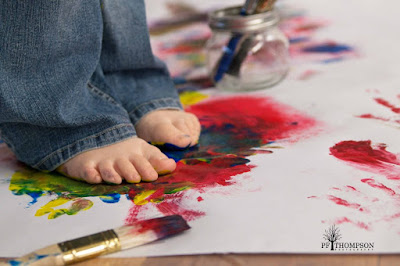English - Verbs & The Past Tense
Every Monday in school we have a GPS lesson - Grammar, Punctuation & Spelling. To ease our way back into home schooling this week, we will look at tasks from this area of the curriculum. GPS is the unglamorous but important arm of writing. It is like the plain white bowl that holds your triple chocolate fudge sundae - no one pays it any attention but if it wasn't there, things would be very messy.
Taking a verb and writing it in the past tense is a very simple job on paper. We will only consider regular verbs today; that is verbs that just need -ed added to them to:
jump > jumped
Remembering that this is the rule is the tricky bit! The reason for this is because it never sounds like we have added -ed; it sounds like something else.
Jumped sounds like jumpt - ed sounds like t (as it does in rocked, kicked and slapped).
Wanted sounds like wantid - ed sounds like id (as it does in lifted, painted and floated).
Cleaned sounds like cleand - ed sounds like d (as it does in boiled, played and steamed).
Keep an eye out for these traps as you move forward on other tasks and in future weeks!
TASK - Look at the sentences below - identify the verb (what are the people doing) and change them to the past tense:
A farmer worked on a farm.
Year 2's (and any Year 1's who want a challenge) add in adjectives:
A busy farmer worked on a huge farm.
Black belt challenge - add a conjunction (and, but, so, because) to extend the sentence:
Maths - Place Value & Partitioning
Understanding how numbers are represented as tens and ones is an important step in working with numbers. 14 and 41 are different because the 4 digit in these numbers represents different values. This video explains this idea:
https://www.bbc.co.uk/bitesize/articles/zvtppg8
There are activities also on this page as well. I would encourage the practical creation of numbers using representations. I used pasta and bowls to represent 36:
TASK - Try this game:
For each one you could also write the number as a calculation:
So we could write: 30 + 6 = 36. This helps your child understand that the digit 3 in 36 actual value is 30 (or 3 tens) not 3.
TASK - Extension: If your child is secure on this idea, you can try partitioning in different ways. Partitioning just means splitting up a number. The way that the children are most familiar with is the above idea: 30 + 6 = 36. We can, however, partition in different ways. Here our pasta pots can help. I can split the tens pots and individual pieces into 2 groups (keep 10 bits in the pot at all times though):

Here I've got 2 tens and 2 ones on one side and 1 ten and 4 ones on the other, so 22 + 14 = 36. We have partitioned 36 in a different way! You can find many ways to do this with the same number.
I hope you have a happy day, see you tomorrow!
KS1 Team
TASK - Extension: If your child is secure on this idea, you can try partitioning in different ways. Partitioning just means splitting up a number. The way that the children are most familiar with is the above idea: 30 + 6 = 36. We can, however, partition in different ways. Here our pasta pots can help. I can split the tens pots and individual pieces into 2 groups (keep 10 bits in the pot at all times though):

Here I've got 2 tens and 2 ones on one side and 1 ten and 4 ones on the other, so 22 + 14 = 36. We have partitioned 36 in a different way! You can find many ways to do this with the same number.
I hope you have a happy day, see you tomorrow!
KS1 Team











































